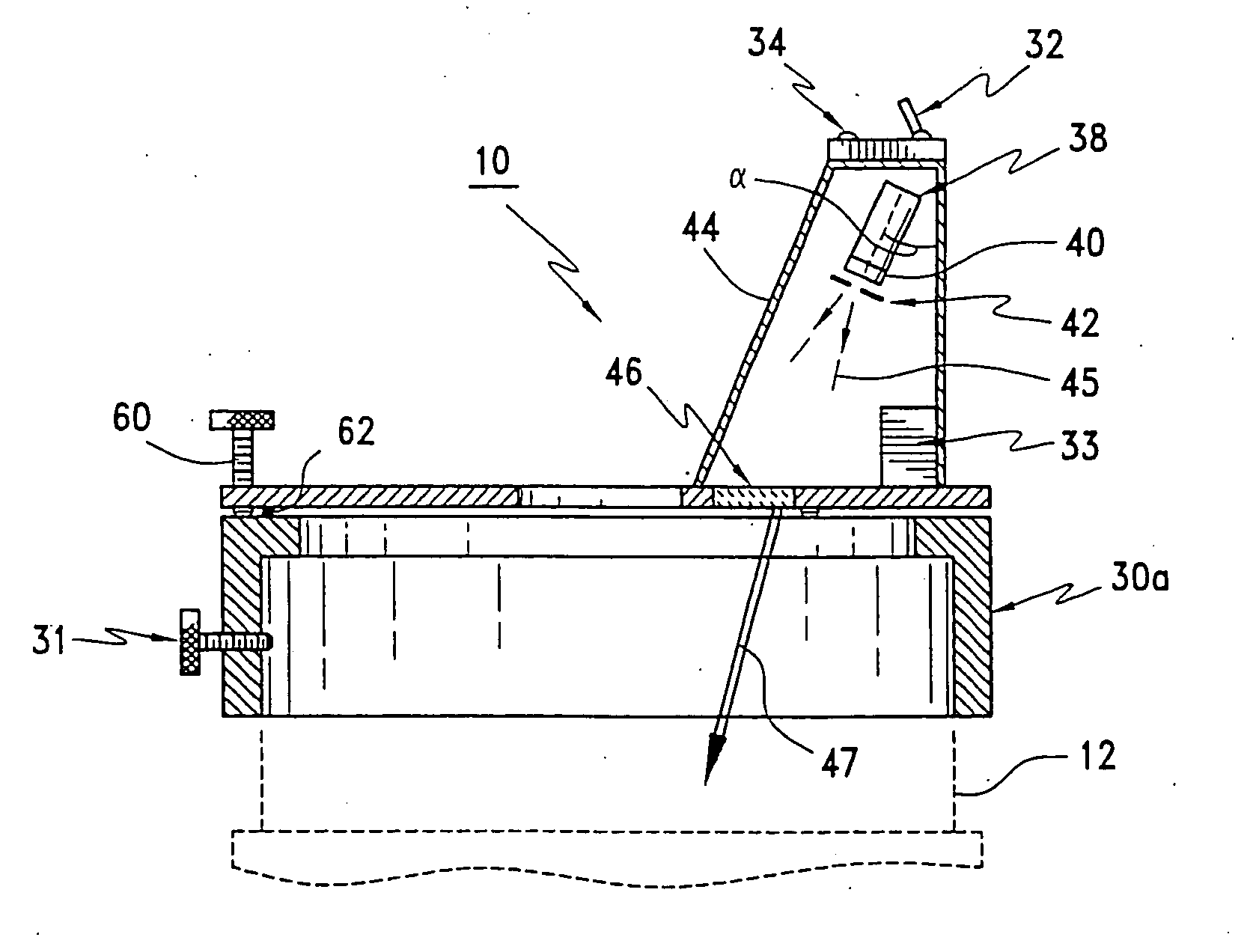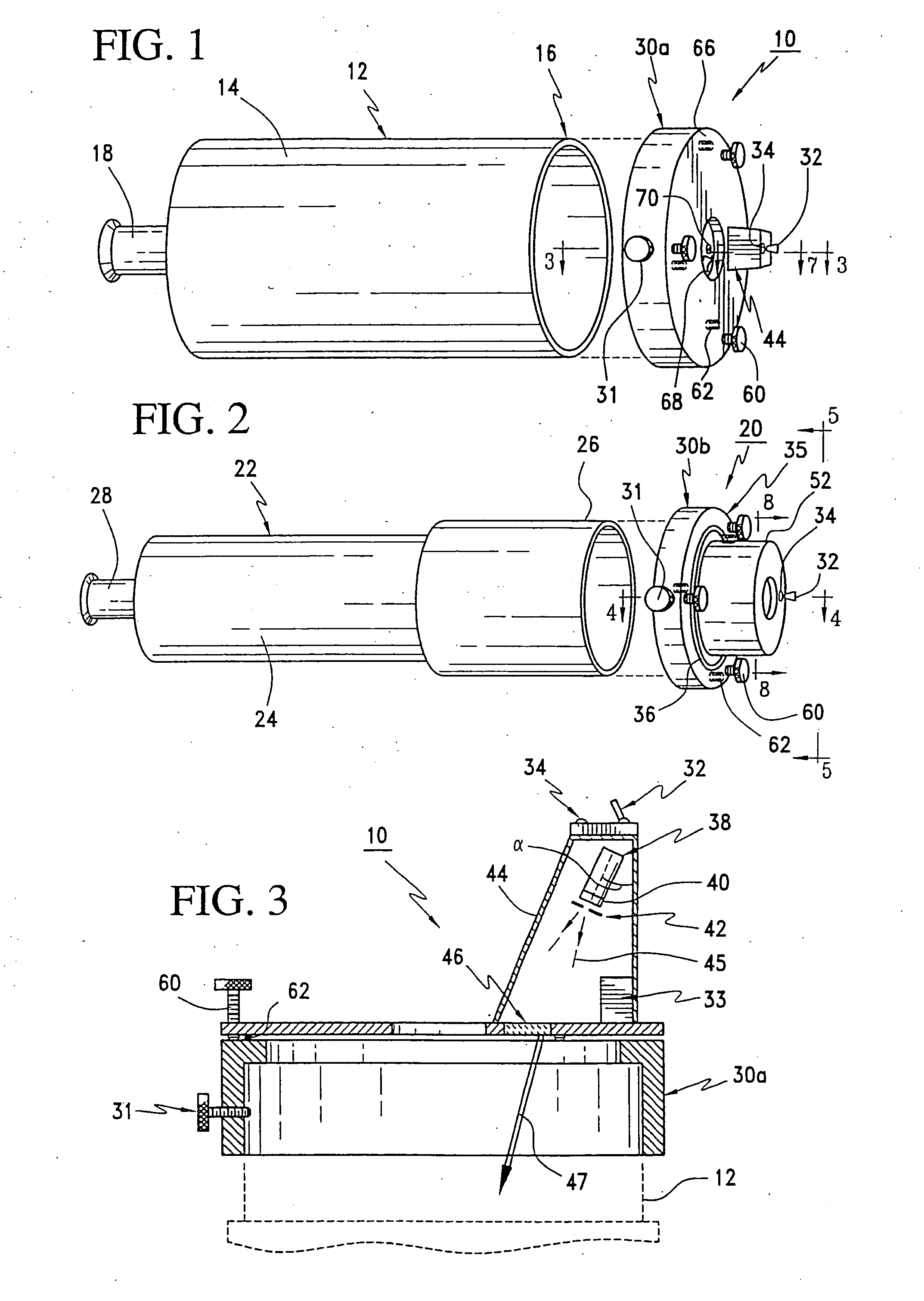Artificial star generation apparatus and method for telescope systems
a technology of artificial stars and telescopes, applied in the field of artificial star generation apparatus and telescope systems, can solve the problems of limiting the accuracy of alignment, large tools, heavy and expensive,
- Summary
- Abstract
- Description
- Claims
- Application Information
AI Technical Summary
Benefits of technology
Problems solved by technology
Method used
Image
Examples
Embodiment Construction
[0027] This invention in conjunction with a catadioptric, dioptric, or catoptric telescope can create several diffracted collimated light beams directed through the front aperture of a telescope to provide the illusion of several point sources when viewed with an ocular. These point sources appear as artificial stars, which allow an observer to quickly and conveniently collimate a telescope without the need to focus on real stars in the sky that are only visible at night and which produce images that are distorted by atmospheric turbulence.
[0028] A diagrammatic view of the optical alignment configuration for an artificial star generator (ASG) 10 for catadioptric and catoptic telescopes is shown in FIG. 1. A catadioptric or catoptric telescope 12 has a body 14 with a front 16 and an ocular 18. FIG. 2 shows a diagramatic view of an alternate optical alignment configuration for another artificial star generator (ASG) 20 for a dioptric telescope 22. Just like the catadioptric and catop...
PUM
 Login to View More
Login to View More Abstract
Description
Claims
Application Information
 Login to View More
Login to View More - R&D
- Intellectual Property
- Life Sciences
- Materials
- Tech Scout
- Unparalleled Data Quality
- Higher Quality Content
- 60% Fewer Hallucinations
Browse by: Latest US Patents, China's latest patents, Technical Efficacy Thesaurus, Application Domain, Technology Topic, Popular Technical Reports.
© 2025 PatSnap. All rights reserved.Legal|Privacy policy|Modern Slavery Act Transparency Statement|Sitemap|About US| Contact US: help@patsnap.com



